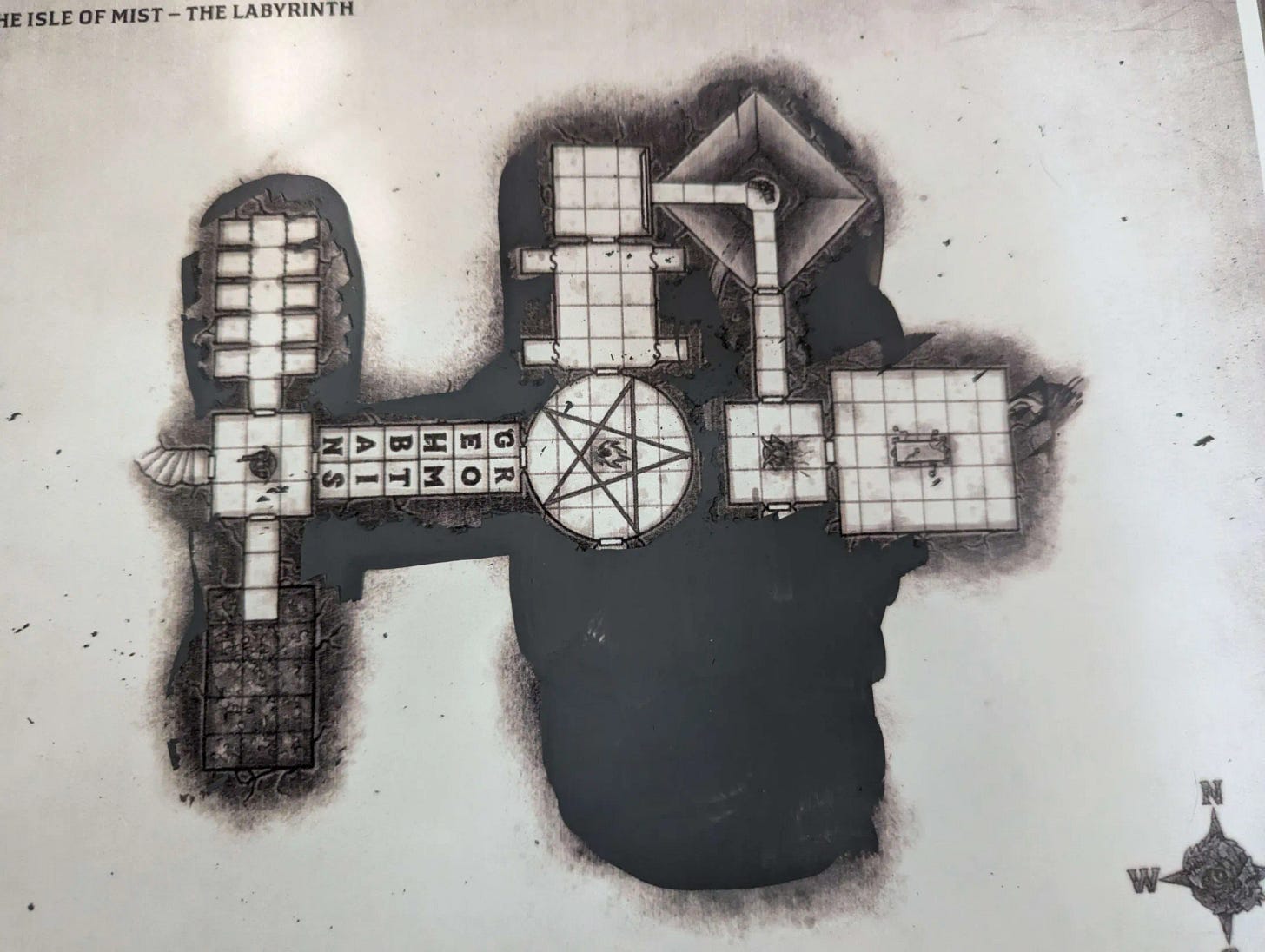Scratch Off Dungeon Maps!
Your players will feel like THEY hit the jackpot
A perpetual qualm I have with dungeon maps is that I either have to give it to my players (which I normally do), which takes a ton of work on my part to remove all the secrets and hidden passages (and they get the dungeon layout “spoiled” for them), or I have to draw it for them step by step as we navigate the dungeon on a shared map.
I don’t like the former cause it’s usually a lot of work on my part. Most adventure writers haven’t gotten in the habit of creating player-facing maps with secrets redacted. If I have one wish for the next few years, it’s that authors start providing these maps. It’s so helpful.
And the latter just isn’t as useful - yeah, everyone’s on the same page, but you can’t take notes on your own map, and you have to stop and draw the map every time they discover a new room, and that feels tedious to me, and time consuming.
So, I set out to find a best of both worlds, and landed on… Scratch Off Dungeon Maps!
Believe it or not, it’s dead simple, takes no time, and is incredibly fun for the players and the GM alike. Here’s how it goes.
1. Print and Laminate the Player Map
Free League provided player facing maps on their website which makes them an S-class publisher in my book. I printed this off at home on card stock, and then laminated them with a little home laminator (Link is to Amazon, it’s not a referral link, I just wanted to link one to show you they are cheap and small.) This took like two minutes total for two copies of the two maps.
You could also use tape to do a faux-lamination. Just layer the map with packing tape. It won’t be as clean, but it’ll work. But I’d buy a laminator if you don’t have one, you’d be surprised at the number of times you find a use for it (especially if you have kids.)
2. Mix up your Scratching Solution
I got the idea for this from this Youtube Video. I decided to try just acrylic paint with a little bit of dish soap. I mixed it up without paying any attention at all to the ratio. If I had to guess, I probably added one part soap to five parts paint. It’s really not precise at all, you don’t have to worry about how much of each. I used cheap Apple Barrel craft acrylics and Dawn dish soap. Whatever you have laying around will work.
3. Brush the Solution onto the Map
I used a big craft paint brush and just brushed it on the parts of the map I wanted to cover up.
4. Let it Dry
It doesn’t take long, but I let it dry overnight to be safe. If you’re in a time crunch, you can dry it with a hair dryer in a few minutes. (I had to do this when one of my maps got wet.) I suppose I should call that out here - if you get this stuff wet, it reactivates and has to be dried again, so take care not to spill on it.
That’s it.
Dead simple. Took me 15 minutes and I had never done it before. You could pre-mix some of this and put it in a sealed container if you do it regularly. You can even keep the maps, scratch off the whole thing, and re-paint it if you want to run that same dungeon again for a different group.
You could even do regular acrylic paint over top of the gray layer if you want to add details or symbols or text or something. I can’t think of a use case for it right now, but I’m sure someone out there will have a creative thought about how you could add details on top of the scratching layer.
Overall, I can’t recommend this enough. I asked for my players opinion, did they enjoy it? Did they feel like it added value? Everybody answered in the affirmative - they enjoyed scratching it off and revealing the next rooms, they loved that they didn’t know exactly what awaited them, it was satisfying to scratch. I will be doing all my dungeon maps like this going forward and you should give it a try. Who knows - maybe big publishers will start including scratch off maps in box sets and published adventures. I’d certainly be in favor of it.



I’ve done this to decent effect with sharpie and alcohol wipes (RIP my sharpies!). My biggest complaint is that it’s easy for players to accidentally uncover too much of the map. It might work to print the map to a 1” or 1/2” grid and then paint or stencil over the scratch-off with the same 1” grid. At that point you could give players traditional dungeon traversal instructions.
As a player this was such a fun way to discover the dungeon!